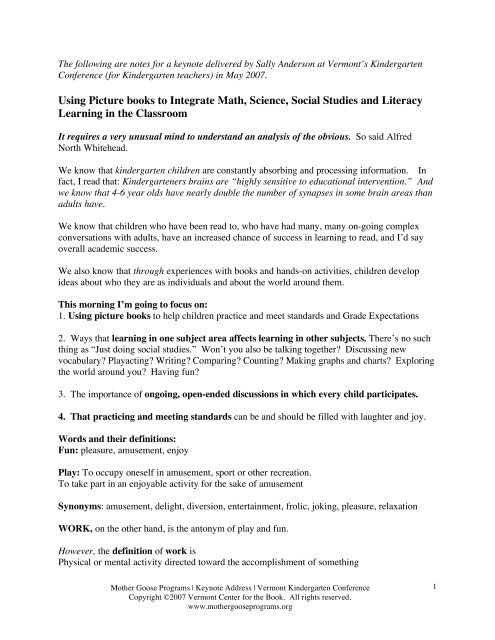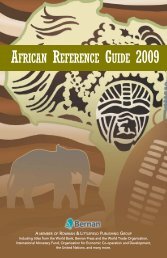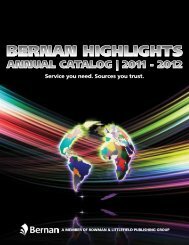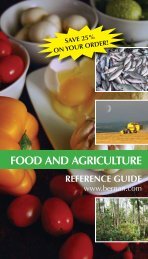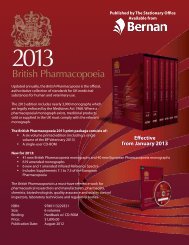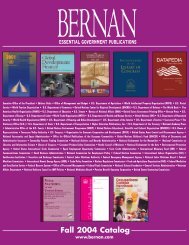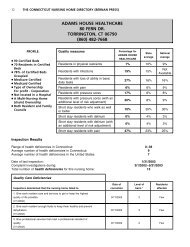Using Picture books to Integrate Math, Science, Social Studies and ...
Using Picture books to Integrate Math, Science, Social Studies and ...
Using Picture books to Integrate Math, Science, Social Studies and ...
Create successful ePaper yourself
Turn your PDF publications into a flip-book with our unique Google optimized e-Paper software.
The following are notes for a keynote delivered by Sally Anderson at Vermont’s Kindergarten<br />
Conference (for Kindergarten teachers) in May 2007.<br />
<strong>Using</strong> <strong>Picture</strong> <strong>books</strong> <strong>to</strong> <strong>Integrate</strong> <strong>Math</strong>, <strong>Science</strong>, <strong>Social</strong> <strong>Studies</strong> <strong>and</strong> Literacy<br />
Learning in the Classroom<br />
It requires a very unusual mind <strong>to</strong> underst<strong>and</strong> an analysis of the obvious. So said Alfred<br />
North Whitehead.<br />
We know that kindergarten children are constantly absorbing <strong>and</strong> processing information. In<br />
fact, I read that: Kindergarteners brains are “highly sensitive <strong>to</strong> educational intervention.” And<br />
we know that 4-6 year olds have nearly double the number of synapses in some brain areas than<br />
adults have.<br />
We know that children who have been read <strong>to</strong>, who have had many, many on-going complex<br />
conversations with adults, have an increased chance of success in learning <strong>to</strong> read, <strong>and</strong> I’d say<br />
overall academic success.<br />
We also know that through experiences with <strong>books</strong> <strong>and</strong> h<strong>and</strong>s-on activities, children develop<br />
ideas about who they are as individuals <strong>and</strong> about the world around them.<br />
This morning I’m going <strong>to</strong> focus on:<br />
1. <strong>Using</strong> picture <strong>books</strong> <strong>to</strong> help children practice <strong>and</strong> meet st<strong>and</strong>ards <strong>and</strong> Grade Expectations<br />
2. Ways that learning in one subject area affects learning in other subjects. There’s no such<br />
thing as “Just doing social studies.” Won’t you also be talking <strong>to</strong>gether? Discussing new<br />
vocabulary? Playacting? Writing? Comparing? Counting? Making graphs <strong>and</strong> charts? Exploring<br />
the world around you? Having fun?<br />
3. The importance of ongoing, open-ended discussions in which every child participates.<br />
4. That practicing <strong>and</strong> meeting st<strong>and</strong>ards can be <strong>and</strong> should be filled with laughter <strong>and</strong> joy.<br />
Words <strong>and</strong> their definitions:<br />
Fun: pleasure, amusement, enjoy<br />
Play: To occupy oneself in amusement, sport or other recreation.<br />
To take part in an enjoyable activity for the sake of amusement<br />
Synonyms: amusement, delight, diversion, entertainment, frolic, joking, pleasure, relaxation<br />
WORK, on the other h<strong>and</strong>, is the an<strong>to</strong>nym of play <strong>and</strong> fun.<br />
However, the definition of work is<br />
Physical or mental activity directed <strong>to</strong>ward the accomplishment of something<br />
Mother Goose Programs | Keynote Address | Vermont Kindergarten Conference<br />
Copyright ©2007 Vermont Center for the Book. All rights reserved.<br />
www.mothergooseprograms.org<br />
1
And the synonyms? Drudge, obligation, servitude, stress, struggle, exertion, chore<br />
To paraphrase Mark Twain: Work <strong>and</strong> play are words used <strong>to</strong> describe the same thing under<br />
different conditions.<br />
And in education we have often made an arbitrary distinction between learning <strong>and</strong> fun: recess<br />
is fun…..BUT math is work. Child-directed activities are play…BUT teacher-directed activities<br />
are work.<br />
And how about our own attitudes? OK children, it’s time <strong>to</strong> settle down <strong>and</strong> get <strong>to</strong> WORK.<br />
No more fooling around, this is serious business.<br />
And what does the principal say? Seems <strong>to</strong> me there’s <strong>to</strong>o much fun in this classroom, when do<br />
you ever work?<br />
And I know no one here looks like this, but the frown, the intensity, the pressure, the stress, the<br />
WORK…. Hey, we’re not PAID <strong>to</strong> have fun! Isn’t that what you all are thinking right now?<br />
And how about education st<strong>and</strong>ards (Grade Expectations)? Great Expectations (as I call them)?<br />
Even in the professional literature, the pressure of st<strong>and</strong>ards is often related <strong>to</strong> the lack of fun <strong>and</strong><br />
play in the classroom.<br />
I think we all KNOW that we can learn <strong>and</strong> have fun at the same time.<br />
We all recognize that our attitudes <strong>to</strong>ward learning, how we see ourselves, how confident <strong>and</strong><br />
competent we feel…these all affect our ability <strong>to</strong> learn.<br />
We also know that learning requires an interactive balance of gaining facts <strong>and</strong> skills <strong>and</strong> making<br />
the information one’s own.<br />
Most people are not motivated <strong>to</strong> learn through negative criticisms.<br />
Instilling self-confidence in young children is the single most important task of teachers <strong>and</strong><br />
parents. And <strong>to</strong> feel self-confident children must feel competent. And competence is based on<br />
doing, on being able <strong>to</strong> do something<br />
<strong>Picture</strong> <strong>books</strong> <strong>and</strong> all content areas: Everyone likes a good s<strong>to</strong>ry. (Tell some personal s<strong>to</strong>ry<br />
here, the audience quiets down, then point this out.)<br />
So I’ve selected my <strong>books</strong> – read them before reading them <strong>to</strong> children, right? – remember the<br />
obvious?<br />
Mother Goose Programs | Keynote Address | Vermont Kindergarten Conference<br />
Copyright ©2007 Vermont Center for the Book. All rights reserved.<br />
www.mothergooseprograms.org<br />
2
Setting the context/assessing children’s knowledge: A conversation about some aspect or<br />
aspects of the book <strong>to</strong> help children underst<strong>and</strong> the s<strong>to</strong>ry, characters, vocabulary. A What We<br />
Know chart which you can add <strong>to</strong> after reading the book <strong>and</strong> as you continue explorations <strong>and</strong><br />
investigations around the book.<br />
If it’s the first time reading the book <strong>to</strong> your class, try <strong>to</strong> read the book straight through without<br />
interruptions so that children have a better chance of paying attention <strong>to</strong> the s<strong>to</strong>ryline, the book’s<br />
narrative.<br />
This is very important when reading <strong>to</strong> children. The listener needs <strong>to</strong> be involved in the action,<br />
the characters’ motivations, the mysteries <strong>and</strong> surprises of the book.<br />
I know, I know—you’re asking yourselves: what about asking questions? Having children<br />
make predictions? (Talk here about your own reading/interruptions…the anecdote about if<br />
someone s<strong>to</strong>pped you at the end of each page of Jane Eyre, how could you enjoy the s<strong>to</strong>ry or<br />
keep track of what was happening? Act this out)<br />
And if your interested in the GE RK:13 Making predictions about what might come next, use<br />
non-fiction. Talk about Steve Jenkins <strong>and</strong> his successful non-fiction <strong>books</strong>. Read all his <strong>books</strong>,<br />
help children become members of a literate community, make predictions!<br />
Reading the same book many times, in different contexts. Emphasize this importance.<br />
Talking about the book: use open-ended questions, every child participates.<br />
Officer Buckle <strong>and</strong> Gloria by Peggy Rathmann<br />
I selected this book because for me it’s one of the funniest <strong>books</strong> ever written. You know the<br />
s<strong>to</strong>ry….with rules such as: “Never st<strong>and</strong> on a swivel chair” <strong>and</strong> the illustration shows the<br />
principal st<strong>and</strong>ing on a swivel chair.<br />
Then Gloria begins <strong>to</strong> act out the rules: “Never leave a thumbtack where you might sit on it.”<br />
Rules: safety, classroom, homer, playground (compare <strong>and</strong> contrast; sort, same <strong>and</strong> different;<br />
This is Our House, Horace, Morris but Mostly Delores, which can lead <strong>to</strong> conversations about<br />
friendships —Chester’s Way, Jamaica <strong>and</strong> Brianna. All four <strong>books</strong> lead <strong>to</strong> conversations <strong>and</strong><br />
activities about conflict resolution, which lead back <strong>to</strong> police officers <strong>and</strong> Officer Buckle <strong>and</strong><br />
Gloria.<br />
Each time we make a set of rules you’ll want <strong>to</strong> vote <strong>to</strong> include or exclude rules based on fair <strong>and</strong><br />
not fair or another criteria children might select for voting.<br />
Careers/Jobs: Interviewing/visiting local business, workers (field trip) Saturday at the New<br />
You, Mama, I’ll Give You the World, Albert’s Alphabet.<br />
Mother Goose Programs | Keynote Address | Vermont Kindergarten Conference<br />
Copyright ©2007 Vermont Center for the Book. All rights reserved.<br />
www.mothergooseprograms.org<br />
3
RESEARCH<br />
Mapping the neighborhood, classroom, school, street (Jonathan <strong>and</strong> His Mommy, Where Are<br />
You Going Manyoni?, The Big Trip, My Map Book). Making maps you’ll be talking about near,<br />
far, next <strong>to</strong> etc. studying maps of your <strong>to</strong>wn, or area. Looking globes <strong>and</strong> other maps. You<br />
might even begin a basic conversation about measurement.<br />
Tools of the Trade (collecting <strong>and</strong> sorting) You’ll make sets, recognize <strong>and</strong> name attributes<br />
Set up a s<strong>to</strong>re/restaurant (wants/needs, consumers/producers) Big Jimmy’s Kung Pau Chinese<br />
Take Out is a good book <strong>to</strong> use.<br />
What can children do <strong>to</strong> make the community cleaner, more attractive, happier? Identify a<br />
problem, make a plan, try the plan, if this doesn’t work make a new plan. Albert’s Alphabet,<br />
Lottie’s New Beach Towel)<br />
The Big Trip. (Transportation), Don’t Let the Pigeon Drive the Bus, (which you will have <strong>to</strong> act<br />
out). Opportunity for graphing: How We Get <strong>to</strong> School. Remember about graphing: use the<br />
same units, able <strong>to</strong> read by just looking at it.<br />
Behaviors: Don’t Let the Pigeon Drive the Bus:<br />
Friendship: What it means <strong>to</strong> be a friend: Brains<strong>to</strong>rm list, read <strong>books</strong> <strong>to</strong> add <strong>to</strong> the list.<br />
Discussions about inclusion <strong>and</strong> exclusion. Chester’s Way (Henkes), The Other Side<br />
(Woodson). Prejudice.<br />
Other Cultures: Some of the <strong>books</strong> we talked about when we made maps plus I Lost My Tooth<br />
in Africa. Which also lead <strong>to</strong> RESEARCH projects about families/celebrations, etc.<br />
Measurement: Actual Size: st<strong>and</strong>ard <strong>and</strong> non-st<strong>and</strong>ard measurement: Measure by h<strong>and</strong>s,<br />
measure by <strong>to</strong>ngues. Make a chart: longest, shortest, tallest. Collect data. Research the animal<br />
or habitats, other regions. Are any of these animals found in Vermont? How can we<br />
RESEARCH <strong>and</strong> find out about Vermont animal life?<br />
Counting, adding <strong>and</strong> subtracting: Part, part, whole. Number sentences with objects,<br />
counting animal feet<br />
Building structures (back <strong>to</strong> the mapping/neighborhood): 3 Little Javelins, 3 Pigs<br />
So, did any learning take place in all we just talked about?<br />
Reading: Recognizing rhymes, key parts of a book, using strategies <strong>to</strong> unlock meaning of words,<br />
identifying synonyms <strong>and</strong> an<strong>to</strong>nyms, underst<strong>and</strong>ing basic concepts such as over, under, after,<br />
behind, making connections between self <strong>and</strong> text, <strong>and</strong> text <strong>to</strong> world, identifying characters in a<br />
s<strong>to</strong>ry, actually, it looked <strong>to</strong> me as though every read aloud experience would allow children<br />
opportunities <strong>to</strong> practice <strong>and</strong> refine all the skills.<br />
Mother Goose Programs | Keynote Address | Vermont Kindergarten Conference<br />
Copyright ©2007 Vermont Center for the Book. All rights reserved.<br />
www.mothergooseprograms.org<br />
4
His<strong>to</strong>ry <strong>and</strong> <strong>Social</strong> <strong>Studies</strong>: Inquiry question: How, why? Research questions (What might we<br />
see at…), conducting research <strong>and</strong> displaying information or role playing, etc., communicating<br />
their ideas, map making our school, classroom, the walk <strong>to</strong> the police station, etc., cooperation,<br />
rules, buyer/seller, needs <strong>and</strong> wants, other cultures, identifying feelings that might end in conflict<br />
Health: identify safety rules, rules <strong>to</strong> prevent spread of germs, healthy choices<br />
<strong>Science</strong>: Process skills of science (“Just like a scientist”), sorting, properties of matter (<strong>to</strong>ols of<br />
trades) could move off this in<strong>to</strong> rock sorting If You Find a Rock, Rocks in His Head<br />
Sometimes we have <strong>to</strong> work at it, but who says it can’t be fun?<br />
Summary<br />
So, what have we been reminded of this morning?<br />
Being intentional in our work <strong>and</strong> having FUN. We can laugh <strong>and</strong> learn at the same time.<br />
The importance of using <strong>books</strong> in many different ways <strong>and</strong> reading <strong>and</strong> talking about the<br />
same book many, many times.<br />
That reading <strong>and</strong> talking <strong>to</strong>gether help children experience <strong>and</strong> learn about content <strong>and</strong> help<br />
develop social skills <strong>and</strong> concepts as well as language <strong>and</strong> literacy skills <strong>and</strong> depending on the<br />
conversations <strong>and</strong> the extending activities, how they develop science, math skills <strong>and</strong> concepts as<br />
well.<br />
That learning in one domain affects learning in other domains. There’s no such thing as “Just<br />
doing social studies.” Won’t you also be talking <strong>to</strong>gether? Discussing new vocabulary?<br />
Playacting? Writing? Comparing? Counting? Making graphs <strong>and</strong> charts? Exploring the world<br />
around you? Having fun.<br />
How essential it is <strong>to</strong> have ongoing, open-ended conversations with children<br />
We can meet the same st<strong>and</strong>ards of GE through a variety of explorations in different subject<br />
areas.<br />
And conversations <strong>and</strong> <strong>books</strong>?<br />
Broad <strong>and</strong> deep language development is the product of frequent exposure <strong>to</strong> varied <strong>and</strong> complex<br />
language. None of us can endlessly imitate speech. We run out of ideas or just plain get sick of<br />
it.<br />
But if <strong>books</strong> are added….we can talk about new <strong>and</strong> different experiences, experiences we’ve all<br />
shared through s<strong>to</strong>ries. And use these s<strong>to</strong>ries as we model behaviors <strong>and</strong> we have new <strong>and</strong> rich<br />
vocabulary <strong>to</strong> express our ideas.<br />
Mother Goose Programs | Keynote Address | Vermont Kindergarten Conference<br />
Copyright ©2007 Vermont Center for the Book. All rights reserved.<br />
www.mothergooseprograms.org<br />
5
All of these ideas, combined with careful observation <strong>and</strong> documentation of the children in your<br />
care <strong>and</strong> regular communication with families about their children’s activities provide children<br />
with the Learning Foundations they need—not just for school success but for life.<br />
Now please do not misunderst<strong>and</strong> me. Just by doing all of this once, do we think every child<br />
will demonstrate competency in every task I’ve mentioned? NO.<br />
However, over the course of a year, every child will have had learning experiences full of joy<br />
<strong>and</strong> laughter, had the opportunity <strong>to</strong> build self-esteem, see him or herself as a learner <strong>and</strong> know,<br />
from these experiences, that learning is FUN.<br />
You are the people who are building the foundations that are critical for children’s reading<br />
<strong>and</strong> academic success <strong>and</strong> social <strong>and</strong> emotional development.<br />
Intentional teaching does indeed transform, change, <strong>and</strong> revolutionize our thinking, talking <strong>and</strong><br />
behaviors.<br />
The work you do transforms, changes <strong>and</strong> revolutionizes the lives of young children.<br />
Keep on having fun in your work.<br />
Thank you.<br />
Mother Goose Programs | Keynote Address | Vermont Kindergarten Conference<br />
Copyright ©2007 Vermont Center for the Book. All rights reserved.<br />
www.mothergooseprograms.org<br />
6


